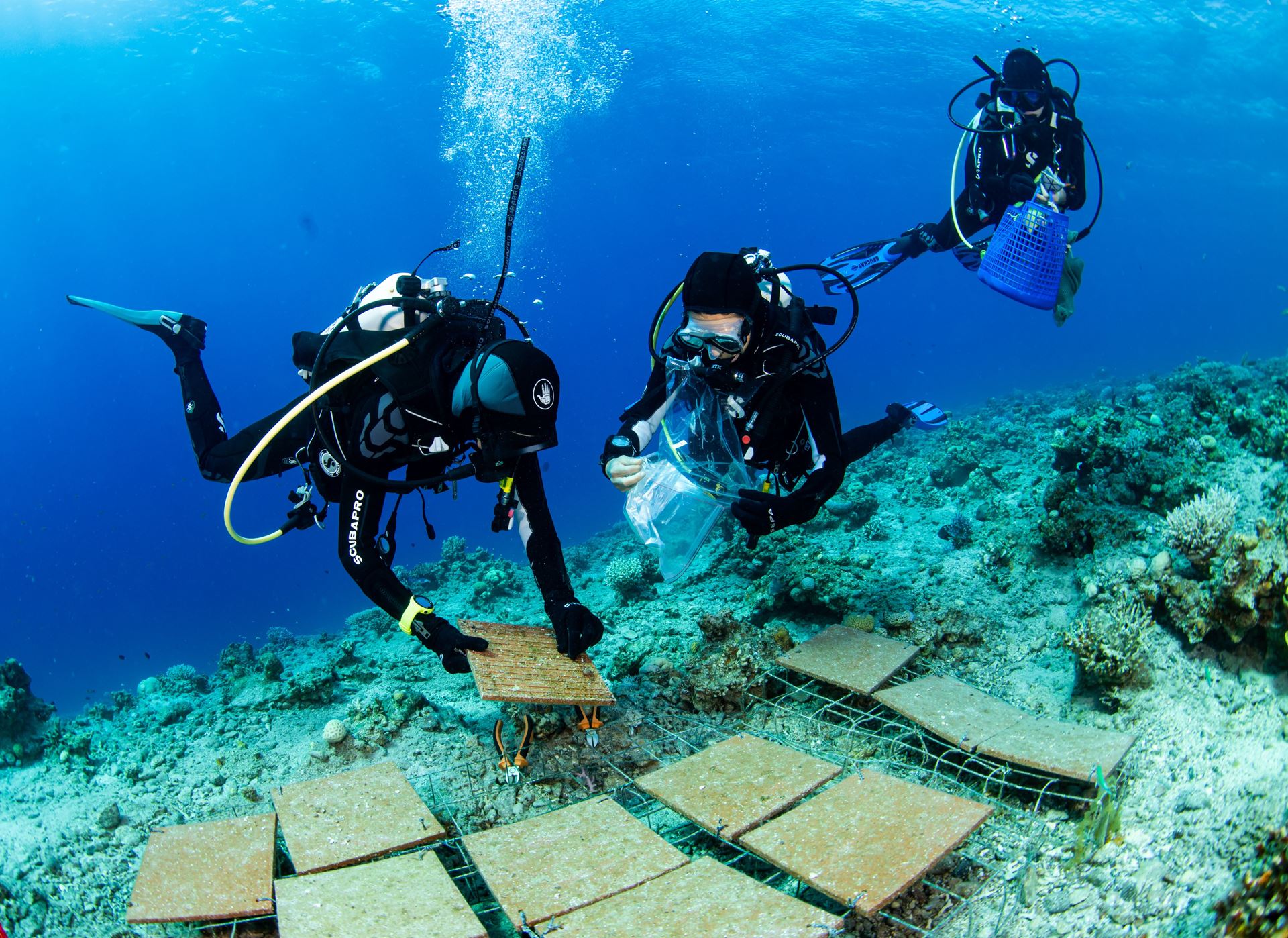About the Monitoring Program
Background
The northern Gulf of Eilat represents a unique marine ecosystem of great environmental and economic significance. The unique combination of desert and coral reefs has led to the rapid development of tourism in Eilat, establishing it as a central economic sector both regionally and nationally. Even this year, when security issues severely affected tourism, the number of overnight stays in Eilat's hotels exceeded 5 million (more than 2 million visitors annually), mainly due to the increase in domestic tourism compared to the previous year. At the same time, in recent years, there has been concerning deterioration in the "health" of the marine ecosystem in Eilat. Specifically, there has been extreme deterioration of the coral reefs, including a drastic decline (since 1986) of several tens of percentage points in the overall coral cover, the disappearance of previously common species (such as sea lilies), and a drop of over 90% in the frequency of several important coral species (including the common branching coral and the "fire coral"—two dominant species in Eilat's reef).
The deterioration has also affected other habitats, such as seagrass beds and sandy beaches. The causes of the deterioration are not clear and are the subject of public debate both within the scientific community and beyond. The main possible causes cited include those related to rapid urban development (sewage, sand dispersion on beaches, polluted runoff from street floods), port activities (phosphate dust, oil pollution, heavy metals, and anti-fouling chemicals), tourism (mechanical damage and sediment resuspension by divers), and marine agriculture (fish cages). There is no doubt that unless immediate action is taken to halt the ongoing deterioration, the reef and surrounding habitats will become desolate. This has severe implications for the conservation and restoration of the Gulf of Eilat's ecosystem as a first-class national and global asset (Eilat's reefs are the northernmost in this part of the world) and significant economic implications for Israel and Jordan.
Prevention and restoration actions are not being implemented because there is no scientific consensus on their nature and scope. The lack of scientific conclusions arises primarily from the absence of long-term data on key parameters that determine the functioning of ecosystems in the Gulf. The only way these data can be available is through long-term, multidisciplinary monitoring. Such monitoring is essential for studying the problems, drawing lessons, and recommending effective actions. All the monitoring activities conducted so far in the Gulf of Eilat were part of short-term research programs funded by international research funds (the DCPE Project from 1974-1976, the REEFLUX Project from 1988-1991, and recently the "Peace Park – RSMPP" project by USAID-MERC from 1999-2002). These research programs have provided a clear conclusion about the ongoing and escalating damage to the ecosystem in the northern Gulf of Eilat. However, the short duration and different nature of the three programs have left unresolved the lack of knowledge regarding the primary causes of the damages. This knowledge is needed in order to form agreed-upon recommendations for preventive actions.
The Purpose of the Monitoring Program in the Gulf of Eilat
The purpose of the monitoring program is to create a factual, long-term knowledge base about the state of the marine ecosystem in the Gulf of Eilat. This knowledge base will serve as a permanent scientific foundation for formulating actionable recommendations to address ecological problems, manage environmental interface programs, and continue the sustainable development of the coastal and marine areas within the State of Israel in the Gulf of Eilat.
In order to fulfill its purpose, the monitoring program will achieve the following objectives:
-
Develop and operate an advanced, modern system for the continuous measurement of key ecological parameters in the primary habitats of the Gulf of Eilat's marine ecosystem.
-
Investigate the existence of ecological trends and assess their intensity.
-
Continuously assess the "health" status of the system.
-
Determine the ecological impact of various pollution factors and monitor them.
-
Build the knowledge base necessary for constructing models to predict the potential effects of planned factors and activities.
-
Report on the state of the ecosystem and warn of impending threats.
-
Propose ways to halt the system's deterioration and restore it.
-
Create a long-term database and integrate it into the "National Marine Information Center."
-
Initiate and direct targeted research to address the problems identified.